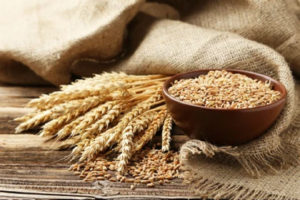India-Australia: Expanding Bilateral F&B Trade post-ECTA
TPCI’s research team prepared a comprehensive report on India-Australia: Expanding Bilateral F&B Trade post-ECTA on the basis of secondary research as well as consultations with experts and industry members. The report analyses trade and investment opportunities for Indian companies in Australia, and also provides recommendations on how the scope of this trade can be enhanced to the benefit of both countries.

TPCI’s research team has developed a comprehensive report titled ‘India-Australia: Enhancing Bilateral Trade in the F&B sector post-ECTA’. The report analyses trade and investment opportunities for Indian companies in Australia, with special focus on the Food and Beverage sector. Apart from assessing the potential impact of the Economic Cooperation Agreement (ECTA), the report incorporates industry consultations and expert recommendations to enhance bilateral trade relations.
India (5th largest economy) and Australia (14th largest economy) are both Commonwealth countries and parliamentary democracies with similar legal systems. Besides, they are members of the Quad (with Japan and US), a trilateral Supply Chain Resilience Initiative (SCRI, with an aim to reduce import dependence on China) and Indo-Pacific Economic Framework (IPEF).
The two nations have long-standing economic ties, and their trade relationship has been steadily growing over the years. They have complementary economies and possess vast potential for collaboration in various sectors. The F&B industry, in particular, offers promising trade and investment opportunities, given the increasing demand for high-quality and diverse food products in both countries.
The post-FTA promise
With an expectation of bilateral trade increasing to US$ 45 billion from existing US$ 27.5 billion over a span of 5 years, India and Australia signed the Economic Cooperation & Trade Agreement (ECTA) on 2nd April, 2022. The agreement came into force on 29th December 2022 after Ratification and Exchange of Written Instruments. It has been signed as a framework to deepen economic cooperation and promote bilateral trade and investment.
The agreement aims to reduce trade barriers, enhance market access for both goods and services, and foster closer ties between the two nations. It provides a platform for further exploration of synergies by streamlining regulations, promoting investments, and facilitating the exchange of goods and services.
The research undertakes a detailed analysis of the trade potential between the two countries in the backdrop of an already flourishing one. Overall trade has risen from US$ 16.65 billion in 2018-19 to US$ 25.96 billion in 2022-23, though India has a huge deficit of US$ 12.1 billion. India’s total exports in 2021-22 registered a higher YoY growth of 104.83% as compared to imports with a YoY growth of 103.17%. Bilateral trade data shows a significant share of commodities like Mineral fuels, Natural pearls, Pharmaceuticals, Ores and slag, machinery and mechanical appliances and Inorganic chemicals. Among the top 10 exports from India in 2022, Mineral fuels (44%); Organic Chemicals (20%); Machinery (19%), Vehicles (19%), Articles of iron and steel (18%), and Pharmaceutical Products (18%) witnessed highest average annual growth rate during 2018-22.
Australia is ranked among the easiest places in the world to do business. It is an open market with minimal restrictions on imports of goods and services. With around 47% workforce being highly qualified, it is unsurprisingly one of the most innovative countries. Higher level of collaboration can be explored in the field of technology specialization across various industries. It is also widely acknowledged for its technological specialization in the food industry, ranking 14th in patenting globally.
An OECD Input-Output analysis helps us understand the differences between countries in the level of adoption of services across industries. The extent of utilization of services in different industries of Australia is higher than that of India. The former has pioneered the world class technologies in agriculture, education, financial services and health. Through deeper engagements like ECTA, Australia can emerge a sustainable partner for R&D and commercial collaborations.
Focus Food & Beverages
India has exported US$ 354.82 million worth of F&B products in 2022-23, establishing a 7.8% CAGR over a span of 5 years, and a 7% share in Australia’s total F&B products imports. Analysing India’s F&B exports to Australia at 2 HS code level, 7 products occupy 81.4% of the total F&B exports to Australia in 2022-23.

When you look at the F&B export basket, Cereals, Coffee, tea and spices, Miscellaneous edible preparations, Lacs, gums and resins and animal & Vegetable fats/oils have emerged as high potential products for expanding exports. The report further drills down to the 8-digit level to ascertain the products garnering maximum export share within the key categories. Being home to a highly health conscious consumer base, the Australian market has opened up new opportunities for Indian exporters of healthy and sustainable food products. This is over and above the huge Indian diaspora (over 721,000 people as of 2020), that continues to grow and prosper.
Even though Australia is a major producer of raw materials and processed foods, imports still make up a considerable and growing proportion of the its F&B consumption. Foods that are brought into Australia for sale must adhere to the Australia New Zealand Food Standards Code, which includes strict biosecurity requirements. To maintain food safety standards, the Department of Agriculture, Fisheries and Forestry (DAFF) operates the Imported Food Inspection Scheme, which employs a risk-based border inspection program.

Source: ITC Trade Map; Figures in US$ million
Given the impracticality of inspecting every single food item imported into the country, DAFF receives advice from the Food Standards Australia New Zealand (FSANZ) regarding foods that pose medium or high risks to public health and safety. Food Standards Australia and New Zealand (FSANZ) is a statutory authority operating under Food Standards Australia New Zealand Act 1991. Although FSANZ develops food standards, responsibility for enforcing and policing food standards rest with the respective states and territories in Australia and the New Zealand government.
The Food Standards code is divided into 4 significant chapters entailing all the requirements for the sale of the food in the two nations. Australia and New Zealand. All the 4 chapters have subsequent parts, which are further backed up by standards. There is also a Schedules section which contains all the schedules relating to the standards throughout the various chapters of the Code.
Industry and expert consultations
On conducting an industry survey with 25-30 prominent Indian F&B exporters to Australia, we found significant interest in the Australian market. However, the above stated detailed, lengthy and the time consuming documentation process and regulatory systems do pose challenges for them. They also highlighted the need for better streamlining of certification agencies within India to reduce costs and minimise delays. Some exporters face challenges in meeting the overseas standards in F&B sector. Competition coming from different nations based on the food segments, make the situation even worse.
The research team also organised a broad based interaction with the Committee for Advanced Trade Research, seeking their opinions on the future roadmap for F&B exports. They have proposed some very targeted measures for boosting F&B exports, which include:
- A proper understanding of Australia’s risk categorization.
- Streamlined Indian clearance agencies.
- Immediate focus on India’s export strengths.
- Expansion of existing relations with mutually beneficial collaborations and partnerships.
Both India and Australia are robust economies that are playing an increasingly pivotal role in reshaping the future of international trade. Apart from an increase in physical trade, the two countries also need to enhance their cooperation in research, innovation, and scale, which promises to be transformative for India’s F&B value chain. And hence the entire report has tried mapping various areas entailing huge potential for both the countries to work on.
To view the complete report, click here












Leave a comment